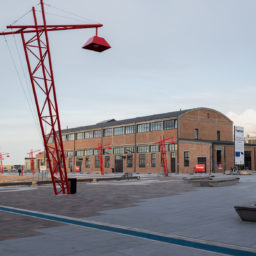The sun never really sets during peak summer in Estonia’s capital—it just grazes the horizon line before rising again. Even during the dead of night, the streets are bustling and shops are open. Home to almost half of Estonia’s population of 1.3 million, Tallinn is teeming with the energy, fierce ambition, and talent of its young citizenry.
Since the Soviet Union receded in 1991, Estonia has transformed itself into one of the wealthiest in Eastern Europe, and one of the most technologically advanced nations in the world. Its purchasing power has grown a staggering 400 percent over the past 20 years. Economic and cultural freedom have been good to Estonians—and, as a result, their contemporary art scene has never been stronger.
“For quite a long time in Eastern Europe, we only thought about getting out,” says Maria Arusoo, the director of the Center for Contemporary Art (CCA), who returned to Tallinn after graduating from Goldsmith’s in London. “But what we actually needed is to activate the scene here.”
Unlike many culture-rich Western cities—whose contemporary art scenes ignited in the 1960s and whose infrastructure is built on hundred-year-old art collections and even older money—Tallinn has had to create a contemporary art community and market out of thin air.
Tardiness, however, can have its benefits. It means that Estonians have been able to make their own rules, unencumbered by deference to the way things have always been done. The result is as close to an art-world utopia as any place can reasonably hope to get.
Below, we survey the rules the Estonian art scene has made for itself—and what the rest of the world can learn from them.
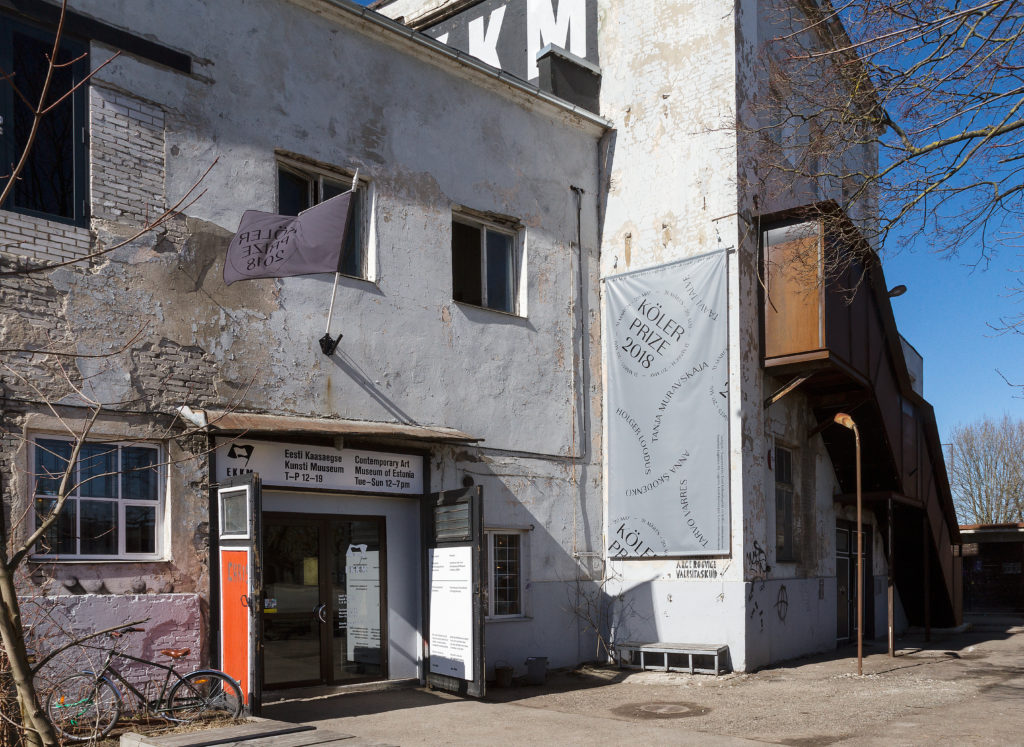
Contemporary Art Museum of Estonia (EKKM). Photo: Hedi Jaansoo.
1. Make What You Don’t Have
At a time when bureaucracy and zoning restrictions keep many ambitious art projects moving at a glacial pace in major cities, Estonia has managed to foster a wave of nimble and inventive initiatives. At the beginning of the post-Soviet 1990s, the country had no contemporary art institutions—though it wanted them, badly.
“There was no discourse for contemporary art in the late 1980s that was public or accepted,” says Marten Esko, the managing director of EKKM, the Contemporary Art Museum of Estonia.
So what do you do when you don’t have a contemporary art museum? You make one. In order to “hijack” the term museum, Esko says that, among other stipulations, a museum in the Baltic country needs some form of an accessible collection.
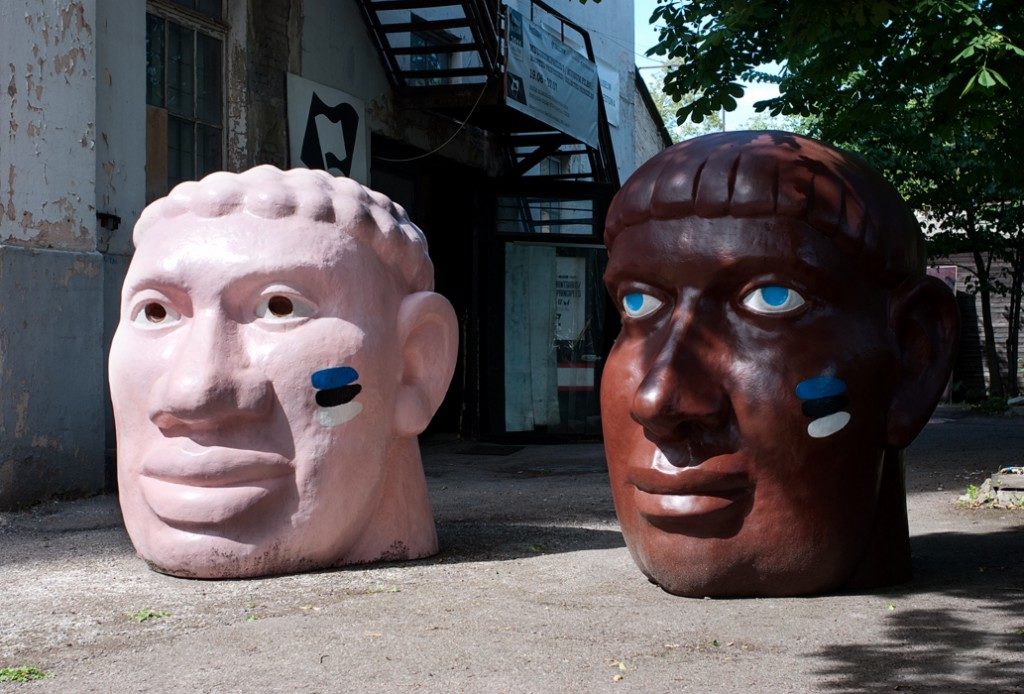
Soundcheck by artist duo Johnson and Johnson (Indrek Köster and Taavi Talve), which is part of EKKM’s permanent collection.
In order to establish EKKM back in its humble beginnings, a board member purchased a sound piece by Estonian artist Raul Keller for one Estonian Kroon (the equivalent of less than a dollar). He had plucked from the ground in a neighboring yard.
Over the next 10 years, the museum has evolved from its DIY squat foundations in an abandoned structure into what it is now: a totally remarkable, multi-storied space in a converted seaside office building that hosts international artists and curators alongside local ones.
Still, EKKM has managed to retain some of its punk origins: In a recent exhibition, the Venezuelan-born, New York-based artist Javier Téllez showed his fantastical film Caligari and the Sleepwalker inside EKKM’s most disorienting exhibition space, an old slanted elevator shaft.
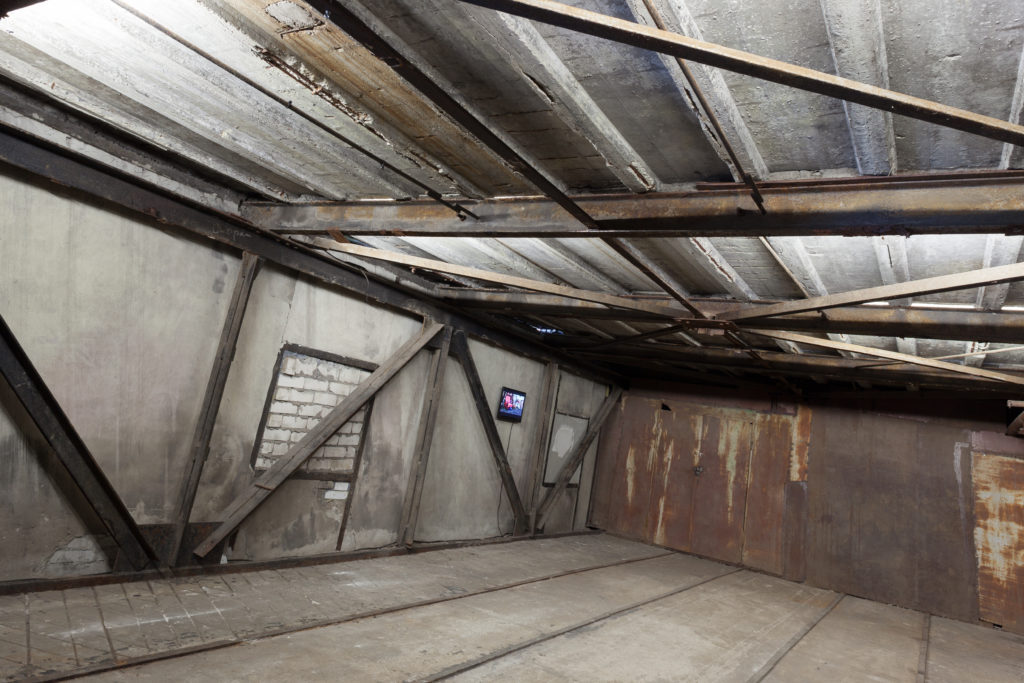
Interior of EKKM, in the former elevator shaft that is now used as a (disorienting) exhibition space. Photo Paul Kuimet.
“The fact that we have really good artists is the main prerequisite, but that by itself is not going to do everything,” says Kadi-Ell Tähiste, a project manager of the recently established Estonian Contemporary Art Development Center. They support projects and bring international writers and curators on tours through the museum, among other activities. “Artists need to focus on their work and we need to have a support structure behind them.”
2. Promote Government Funding
As public money for the arts is being slashed almost everywhere around the world, Estonia has baked cultural funding into its very fabric. Contemporary arts funding is still struggling to asserts itself, but the picture is improving and infinitely better than what most countries afford to this bracket of creatives.
Tallinn’s two most active art institutions, the post-punk EKKM and the slightly older CCA, are both supported in part by the Cultural Endowment, a public fund that redistributes 46 percent of taxes from gambling and lottery proceeds, as well as 3.5 percent of alcohol and tobacco purchases to cultural projects.
The fund’s budget varies from year to year, and members of the visual arts scene seem positive about the tax-based income because it means it is dependent on consumer habits and not the whims of a shifting government. In 2018, the endowment’s budget was almost $38 million (that also goes towards sports and other cultural events as well as visual art).
Such funding opportunities are not just available to nonprofits, either. The European Union Regional Development fund offers art galleries money via the Estonian Contemporary Art Development Center, so that they can participate in international art fairs—a situation many galleries struggling to keep up with the costs of such global events could only dream of. (Austria and Belgium also have programs like this.) This national fund covers up to 70 percent of galleries’ related participation, shipping, and booth fees. As a result, prominent but young contemporary art galleries like Temnikova & Kasela were able to attend the LISTE fair in Basel this year.
3. Form a Union
Another seemingly Utopian element of cultural life in Estonia is actually a holdover from the pre-Soviet era: the Artists’ Association, a kind of union for all types of cultural workers.
Numbering just under 1,000 members (and 19 sub-associations), artists pay a symbolic €13 or less to join. In exchange, they get their own studios (though they often get waitlisted for them) in one of two historic buildings collectively owned by the union. Prominent young painters like Merike Estna are a permanent fixture there, as well as photographer Liina Siib, who took over the Estonian Pavilion at the 54th Venice Biennale.
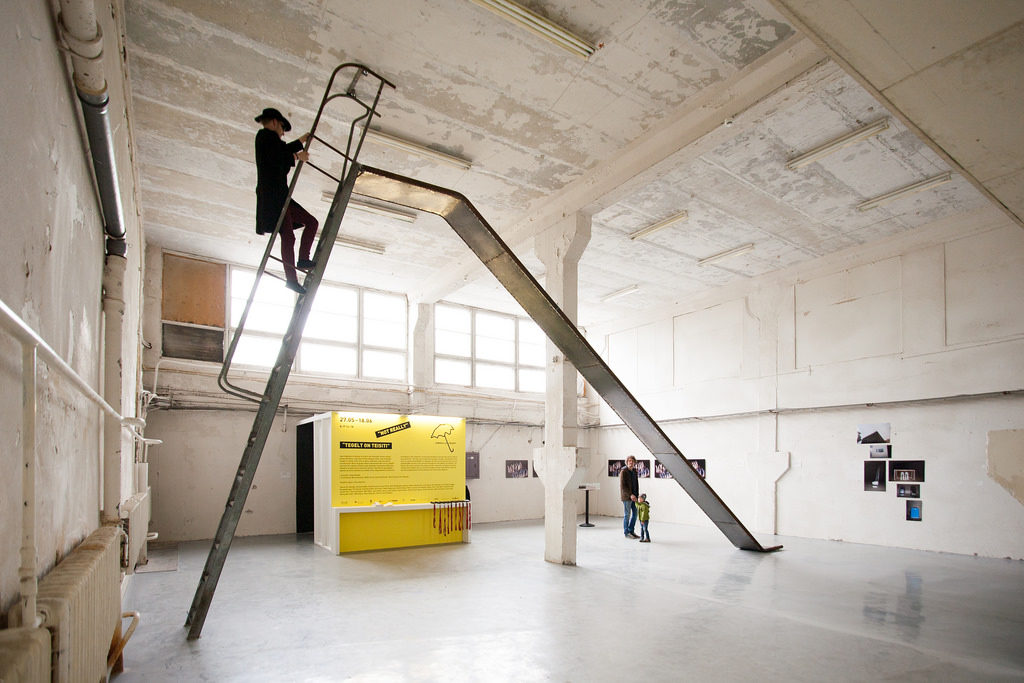
ARS Project Space in ARS Art Factory in Tallinn, which is run by the Artists’ Association. Exhibition “Not Really” by Umbrella Group. Photo by Robert Laursoo.
The union also manages and supports around 50 visual artists and other cultural workers a year, who can apply to receive a minimum wage salary. It varies, but figures number around €500 ($585) a month over a six-month period (Extensions are also possible). It’s not perfect, says many artnet News spoke to, but it’s something of an old-world socialist model that hearkens back to the 1920s, hailing back to a time when artists were supported and valued by the state regardless of their ability to turn a profit.
During the Soviet era, artists had to join the union in order to work—they couldn’t get paint or brushes without a membership. But now, Tähiste says, younger artists are joining simply to advocate collectively, with the hope that the association will function like a traditional workers’ union. Everyone seems to agree that it currently serves mostly as a landlord. But like most aspects of cultural life in Tallinn, the fluctuating group is receptive to important changes that could still be made.
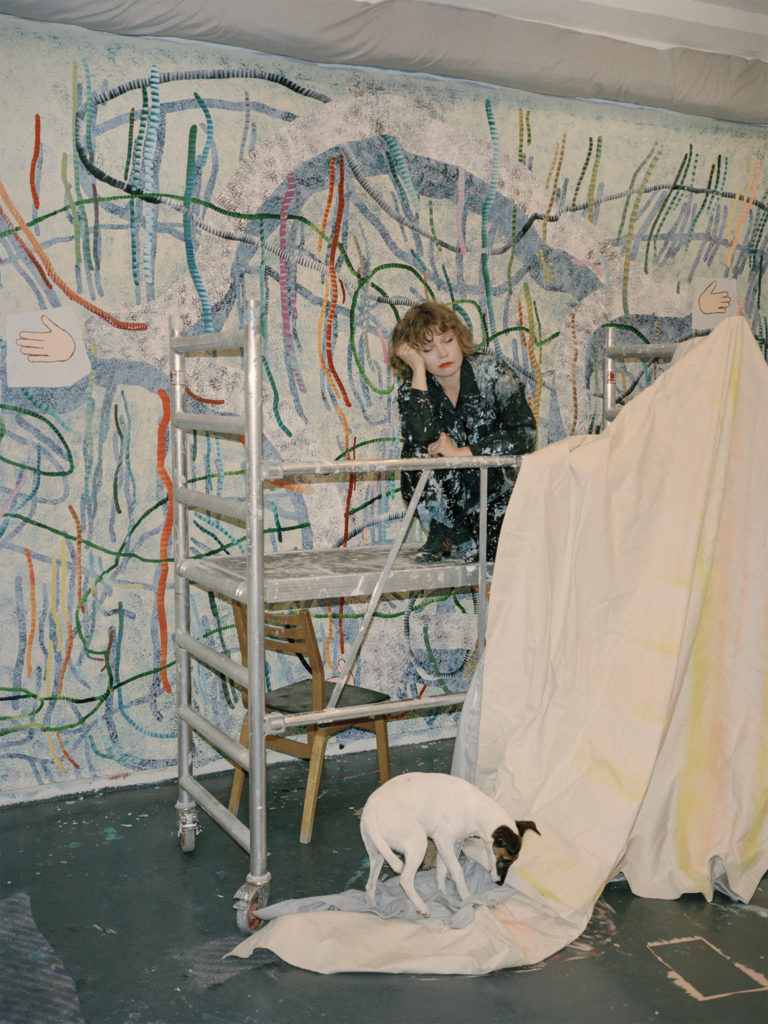
Merike Estna in her studio in ARS Art Factory, which is part of the Artists’ Association. Photo by Dmitri Gerasimov.
4. Be Open to Chance Encounters
While many urban art centers around the world tend to be highly stratified, with social circles that rarely, if ever, overlap, Tallinn is compact and agile enough that brief encounters can lead to career-changing opportunities. (It certainly helps that Estonians also tend to be exceptionally accommodating hosts.)
Consider the case of the Los Angeles-based art critic Andrew Berardini, who was invited to give a lecture at the CCA last year as part of an ongoing series that brings international art-world figures to Tallinn.
During his stay, Berardini also visited the studio of Estonian ceramicist and performance artist Kris Lemsalu. The encounter led to a thought-provoking conversation and a friendship. So when Lemsalu was selected to represent Estonia at next year’s Venice Biennale, she decided to ask Bernadini to curate the pavilion.
Although most countries favor local curators, Arusoo, the CCA director and commissioner for the Estonian Pavilion at the Venice Biennale, was supportive of the idea. In other countries, this process might take months and require working through reams of bureaucratic red tape. In Estonia, it went off quickly and without a hitch.
5. Adopt Radical Market Transparency
Above everything else, the Baltic country is perhaps best known as a world leader in digital technology. It has the highest use of Internet in the world (Skype was invented there), every citizen is able to vote and pay traffic tickets online, and every investment instantly becomes searchable public information. So it’s perhaps not surprising that Estonians are also at the forefront of art-market transparency. Earlier this year, they built a database including thousands of local art sales—information that is typically a closely guarded secret.
Funnily enough, the idea grew out of a disagreement over whether or not there was, in fact, an art market in Estonia. “No one realized before what participating in the contemporary art scene—going to art fairs, do exhibitions internationally—really meant [to our market],” Tähiste, the Estonian Contemporary Art Development Center manager, says.
In response to this skepticism and to prove their own validity, a group of art professionals teamed up with Estonian investor and art collector Riivo Anton to create the sleek database called the Estonian Art Index. It launched in April with more than 5,000 aggregated art transactions that took place in Estonia between 1998 and 2017. Users can also look up and track the markets of individual artists.
In true Estonian style, most galleries were happy to participate. The project was a collaboration between different cultural bodies, including Enterprise Estonia, the Estonian Contemporary Art Development Center, and Civitta, a leading management consultancy in the Baltic States.
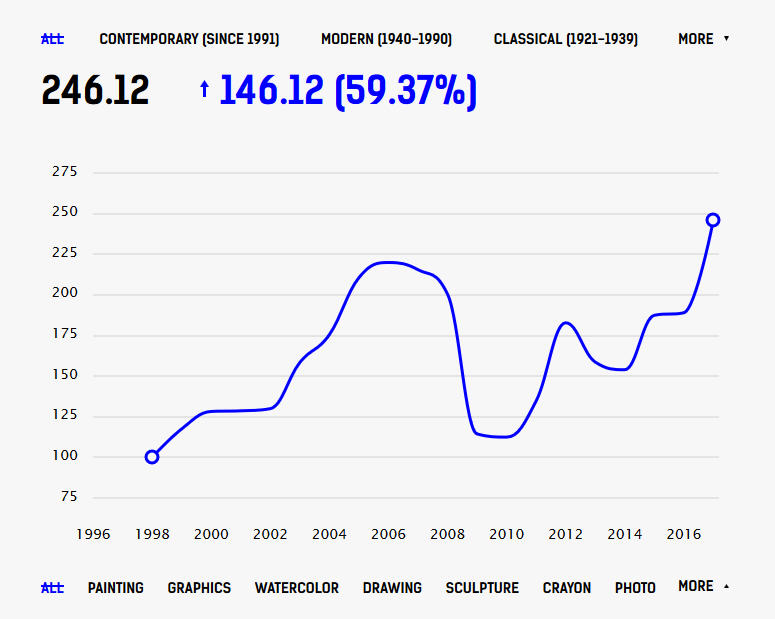
Estonian Art Index.
Last year, according to the index, Estonia had €1.1 million in art sales. The statistics prove that while Estonia is hardly a market powerhouse, its art market is rapidly growing and is in fact being bought and sold consistently in the country every month.
6. Multi-Tasking Is Essential
When an art world is as emergent as Tallinn’s, roles can quickly become multi-hyphenate. “A lot of people are basically doing two jobs to keep the scene active,” says Esko, who also runs the Tallinn Print Triennial in addition to co-running the EKKM.
Similarly, his colleague at the museum, Laura Toots, runs Tallinn’s Photomonth biennial. She also sits on the Cultural Endowment Committee and works part-time at the local arts academy. Oh, and she’s also an artist. Like most who are driving the local scene in Tallinn, Esko and Toots are both under 40.
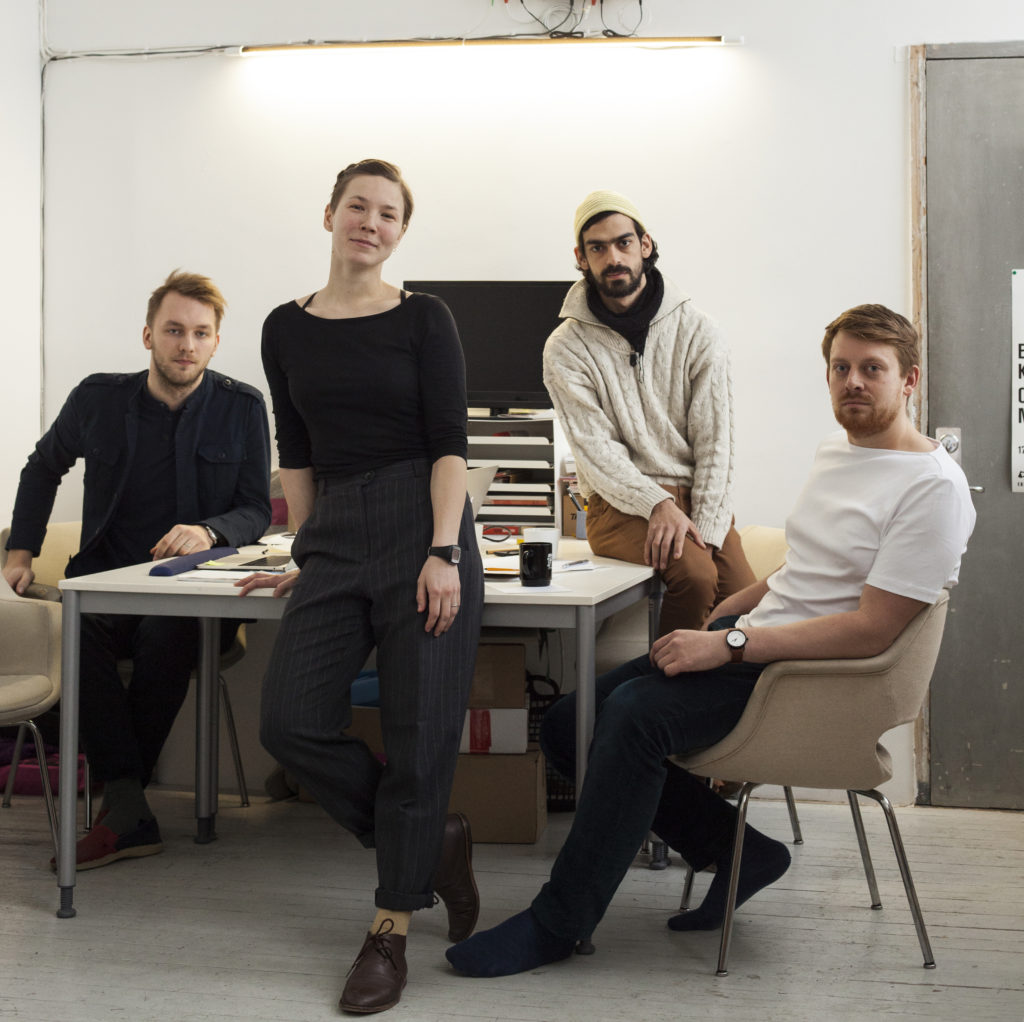
EKKM’s team. From left: Marten Esko, Laura Toots, Kirill Tulin, Johannes Säre. Photograph by Kristina Õllek.
The lack of delineation among roles and the fluidity of resources may pose new challenges down the line. Some note it could present a potential conflict of interest for a museum curator to help establish a for-profit art incubator, for example. But for now, most agree, the approach and start-up spirit is working.
“There is a new generation that are like protestant capitalists,” says Olga Temnikova of the contemporary art gallery Temnikova & Kasela. “They don’t want to own things, but they do want to contribute to the community.”
7. Collaboration Is Key
As power and profit increasingly become consolidated in the hands of a few major institutions across the art world, collaboration has become an oft-invoked buzzword in discussions about how to give the little guys a fighting chance. But in Estonia, it seems like it’s just a way of life.
Arusoo, the director of the nomadic CCA, goes so far as to say that collaboration can replace the physical art center, which she calls an “old format.” Most of CCA’s events involve partnerships and collaborations, and the space operates nomadically.

Mock-up for the Estonian Contemporary Art Development Center.
Next year, the Contemporary Art Development Center—which works with artists and curators from Estonia and abroad to organize interdisciplinary residencies, exhibitions, and seminars—is opening its own space in a seaside warehouse that will serve as a kind of WeWork for the art community.
It will temporarily host art festivals and other “homeless” or roving institutions, as well as collaborative initiatives with international arts groups like the nonprofit Performa Biennial from New York and London’s Whitechapel. Tenants will share costs for PR, accounting, and legal services.
To be sure, Estonia’s hefty public funding and small size offer it unique advantages. But its flexibility and dedication to teamwork offer a compelling case study for how to build a vibrant art scene from the ground up. As Temnikova, the art dealer, says: “The system we have created allows us to survive.” As Estonia continues to emerge globally, its survival tactics are effectively bringing the small but highly inventive nation into a position where it can truly prosper.











